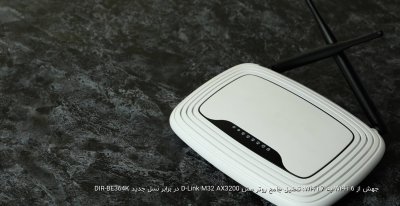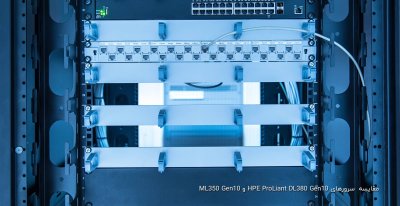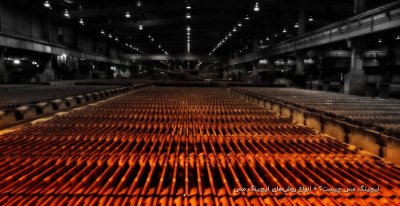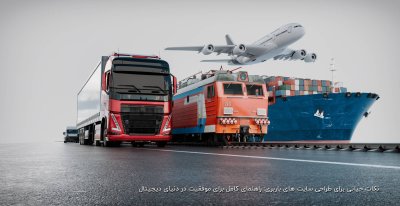DIMO
Active Member
سلام بر همگی و خسته نباشید
با توجه به اینکه انیمیشن WALL•E یه چند ماهیه که روی پرده های سینما های دنیا رفته تصمیم گرفتم تا راجع به این انیمیشن ساخت Pixar که خیلی هم موفق بوده صحبت کنیم،من هم برای اینکه بحث داغتر بشه یه سری مقاله هست راجع به نحوه ساخت و دست اندرکاران این انیمیشن که میگذارم، امیدوارم که دوستان عزیز هم از دیدن و خوندنش لذت ببرن،موفق باشید.
بابت سنگینی صفحه هم پیشاپیش معذرت میخوام.




Metal Mash
The moment Lee saw the story reels, he knew WALL•E was a character he wanted to work on. He was thrilled when his boss gave the OK, and Lee spent the next three years perfecting the rolling personality. For roughly the first year, he worked closely with Production Artist Jay Shuster, defining characteristics the model and rigging required. “It was a lot of back and forth between modeling and rigging because I had to rough it in, go back and add things, rig it again, add some damage, then rig it up so the damage would work properly. Jay Shuster did this phone book sized packet worth of technical drawings. He would give me these drawings a little bit at a time and say,’ we are going to work on the treads today,’ or ‘work on the hands today.’”
The design required a hollow body in which WALL•E could stuff and compact the garbage while still storing all sorts of handy pop-out tools, from solar panels to treads. Shuster’s background in the automotive industry helped him to understand that no matter how many drawings are done, getting the model to appear like it’s functioning mechanically and not intersecting meant taking his 2D drawings and sculpting them in 3D space.









The Eve character, finely honed.


Temper Flairs
Keith Klohn was one of the Effects Sequence Leads. He worked on the shipyard explosion sequence where Eve blows up several huge cargo ships, a sequence that not only had a number of effects but a very short timeline to produce, almost 30 shots in 30 days. With a team of four to seven people, they created explosions, shrapnel debris, dust, and laser blasts, with the sequence ending in a huge dust storm.
Klohn initially set everything up and broke out what each artist was to handle. The dust storm required one dedicated artist for that schedule duration. Others were raining debris and embers. “I was basically doing all the compositing, putting it all together. I did a lot of the debris trails and sweeteners that were going to be comped on top of everything else. We had more effects in this film than we’ve had in any of the previous films. I was picking up all the little extra work so I could have everybody else focus on their one particular thing.” The film called for realistic characteristics in a 70’s Sci-Fi film style that included little things like skittering ground dust or bits of paper kicked up by dust devils, things that made it feel like the environment was alive and ambient.

با توجه به اینکه انیمیشن WALL•E یه چند ماهیه که روی پرده های سینما های دنیا رفته تصمیم گرفتم تا راجع به این انیمیشن ساخت Pixar که خیلی هم موفق بوده صحبت کنیم،من هم برای اینکه بحث داغتر بشه یه سری مقاله هست راجع به نحوه ساخت و دست اندرکاران این انیمیشن که میگذارم، امیدوارم که دوستان عزیز هم از دیدن و خوندنش لذت ببرن،موفق باشید.
بابت سنگینی صفحه هم پیشاپیش معذرت میخوام.


Source::CGSociety
Pixar’s latest industrious undertaking has hit the screens in the US, a story of a lonely robot meant for greater things. Spending his years on Earth cleaning up humanities garbage, the little trash compacter has more gizmos than a Swiss Army knife and more soul than his hollow chest can hold.
The artist’s quest to create him is a story that rivals WALL•E’s own. (William) Austin Lee, Character Modeler and Articulation Artist, and Animator Doug Frankel discuss how they brought the character to life, and Keith (Daniel) Klohn, one of the Effects Sequence Leads, shares how he accomplished some of the digital effects on the film.
The artist’s quest to create him is a story that rivals WALL•E’s own. (William) Austin Lee, Character Modeler and Articulation Artist, and Animator Doug Frankel discuss how they brought the character to life, and Keith (Daniel) Klohn, one of the Effects Sequence Leads, shares how he accomplished some of the digital effects on the film.


Metal Mash
The moment Lee saw the story reels, he knew WALL•E was a character he wanted to work on. He was thrilled when his boss gave the OK, and Lee spent the next three years perfecting the rolling personality. For roughly the first year, he worked closely with Production Artist Jay Shuster, defining characteristics the model and rigging required. “It was a lot of back and forth between modeling and rigging because I had to rough it in, go back and add things, rig it again, add some damage, then rig it up so the damage would work properly. Jay Shuster did this phone book sized packet worth of technical drawings. He would give me these drawings a little bit at a time and say,’ we are going to work on the treads today,’ or ‘work on the hands today.’”
The design required a hollow body in which WALL•E could stuff and compact the garbage while still storing all sorts of handy pop-out tools, from solar panels to treads. Shuster’s background in the automotive industry helped him to understand that no matter how many drawings are done, getting the model to appear like it’s functioning mechanically and not intersecting meant taking his 2D drawings and sculpting them in 3D space.



Beginning with primitive shapes to mock up the design, Lee, Shuster, and Directing Animator Angus MacLane worked in Maya and Pixar proprietary software Menv to be sure WALL•E could hit the poses and expressions that MacLane wanted, but still had the design aesthetic that Shuster wanted.
WALL•E was a character that didn’t actually speak or even have a nose or mouth, so his design had to allow for the ability to communicate through his body language, eye expressions, and a few mechanical sounds.
WALL•E was a character that didn’t actually speak or even have a nose or mouth, so his design had to allow for the ability to communicate through his body language, eye expressions, and a few mechanical sounds.


“Pixar believes in always improving the story,” says Lee, “so we’ll start working on the character even before the story is finalized. We had to constantly modify the exterior design to fit the key story moments that would come up throughout the film.” That meant alterations such as adding a compartment for a lighter that suddenly had story significance, or a heart panel that could fire up jumper cables and hold circuit boards connected with ribbon cables.
In the end, the WALL•E character required four different versions of the model. There was the model used in most of the shots that had sustained damage from his years of toil. That particular model had roughly 140,000 vertices, and the final Maya file for WALL•E was a whopping 168MB. “The joke on the show was, when I first modeled it, it was a little heavy because each one of his treads had as many points as Lightning McQueen from Cars, so it was like he was carrying around a Lightening McQueen on each foot.” There was also what they called “Clean WALL•E” with no damage, “Dead WALL•E” for when the terrain was scattered with broken robots, and a fourth model that Lee wouldn’t reveal because it was a spoiler, but turned out to be the most complicated to create.


Hinging On Character
Rigging was accomplished using Pixar’s propriety software, Geppetto. Clocking in at around a thousand controls, WALL•E sported options that would allow for an endless range of expressive animation, but most of those controls were in the complicated tread mechanism. The treads were designed similar to a stretchy metal watch-band and had to change as his wheels changed configuration. To maintain the integrity of a robot, the treads were modeled and rigged with rotation bits in between the tread lengths, allowing the overall tread belt length to stretch without actually deforming any pieces. The treads could also be rotated out of place when they needed to accrue additional damage.
Rigging was accomplished using Pixar’s propriety software, Geppetto. Clocking in at around a thousand controls, WALL•E sported options that would allow for an endless range of expressive animation, but most of those controls were in the complicated tread mechanism. The treads were designed similar to a stretchy metal watch-band and had to change as his wheels changed configuration. To maintain the integrity of a robot, the treads were modeled and rigged with rotation bits in between the tread lengths, allowing the overall tread belt length to stretch without actually deforming any pieces. The treads could also be rotated out of place when they needed to accrue additional damage.
There were controls to help keep the treads locked to the ground and conform to the ground contour, or for when WALL•E was traveling over uneven terrain, rocks and bumps. This required a proprietary type of collision detection, allowing the Pixar team to take a sampling of the ground immediately around WALL•E and figure out how the tread needed to tilt or angle. Lee and the other riggers spent roughly three months rigging the tread alone. Almost all of the rigging is modeled after real-world limitations, with the only deformations a few extension rods that extent beyond their actual capability, some hoses that extend from the back of WALL•E’s head, a few cheats to the treads early in the film that allows them to stretch slightly in order to wrap nicely around the wheels, and a clever little in-house program called the “plane repulsor”.
With so many utility tools folding in and out of WALL•E, coupled with the need to keep his body a hollow cavity into which he can load and compact garbage, geometry intersection became a concern. To solve this, Lee made full use of the plane repulsor, a simple but handy program designed for ‘Ratatouille’ to keep the rat’s giant eyeballs from poking through the roofs of their mouths. The program works by forcing points to collapse against a plane as it comes into his body. As WALL•E boxes and unboxes, the geometry collapses and uncollapses, stacking in planes inside and expanding to full geometry on the outside. By using this feature, WALL•E was able to convincingly carry all his handy gizmos inside without them poking through to his hollow center.




With so many utility tools folding in and out of WALL•E, coupled with the need to keep his body a hollow cavity into which he can load and compact garbage, geometry intersection became a concern. To solve this, Lee made full use of the plane repulsor, a simple but handy program designed for ‘Ratatouille’ to keep the rat’s giant eyeballs from poking through the roofs of their mouths. The program works by forcing points to collapse against a plane as it comes into his body. As WALL•E boxes and unboxes, the geometry collapses and uncollapses, stacking in planes inside and expanding to full geometry on the outside. By using this feature, WALL•E was able to convincingly carry all his handy gizmos inside without them poking through to his hollow center.

Heart And Soul
As the design for WALL•E was working its way to its final stages, the animators were busy greasing the gears to give the character life. Animator Doug Frankel worked closely with Directing Animator Angus MacLane, whom Frankel credits as a genius when it comes to animating robots. Frankel was grateful for the guidance. “Be careful what you wish for! A lot of us always wish for pure pantomime and not so much wisecracking dialogue. In this case that pretty much landed on us full force. We had to pull off a movie with close to no dialogue with these robots. That mean pantomime became super important and it really tested us as animators because we had to make everything read and communicate purely with body motion.”
WALL•E had to show an array of emotions through body language and binocular eyes with metal flaps that doubled as eyebrows, portraying happiness, sadness, and some anger, though the temper most often belonged to Eve. “The modelers were very smart in the way they built just enough in there so you actually feel like you are seeing an entire face. It’s an amazing trick because the face isn’t there, but you feel it. It’s almost all in the eyes and the brows and the tilt of the head or the stretch in the neck.”
By tilting the outside corners of the eyes downward, WALL•E could look painfully sad. Straight across and he reads as stern. Clear silhouettes were key. The team worked hard to portray what WALL•E was thinking. One rigger created a fake refraction to add a sort of depth to the eyes, a window to the soul, instead of appearing lifeless and mechanical.
The end result was a thinking, feeling character who communicated through binoculars and camera lenses only using posture and mechanical rotations and brilliant odd little sounds that hinted at words or emotions, created by the same artist who did the sounds for R2D2.
As the design for WALL•E was working its way to its final stages, the animators were busy greasing the gears to give the character life. Animator Doug Frankel worked closely with Directing Animator Angus MacLane, whom Frankel credits as a genius when it comes to animating robots. Frankel was grateful for the guidance. “Be careful what you wish for! A lot of us always wish for pure pantomime and not so much wisecracking dialogue. In this case that pretty much landed on us full force. We had to pull off a movie with close to no dialogue with these robots. That mean pantomime became super important and it really tested us as animators because we had to make everything read and communicate purely with body motion.”
WALL•E had to show an array of emotions through body language and binocular eyes with metal flaps that doubled as eyebrows, portraying happiness, sadness, and some anger, though the temper most often belonged to Eve. “The modelers were very smart in the way they built just enough in there so you actually feel like you are seeing an entire face. It’s an amazing trick because the face isn’t there, but you feel it. It’s almost all in the eyes and the brows and the tilt of the head or the stretch in the neck.”
By tilting the outside corners of the eyes downward, WALL•E could look painfully sad. Straight across and he reads as stern. Clear silhouettes were key. The team worked hard to portray what WALL•E was thinking. One rigger created a fake refraction to add a sort of depth to the eyes, a window to the soul, instead of appearing lifeless and mechanical.
The end result was a thinking, feeling character who communicated through binoculars and camera lenses only using posture and mechanical rotations and brilliant odd little sounds that hinted at words or emotions, created by the same artist who did the sounds for R2D2.



“It comes down to clear staging and clear beats,” said Frankel. “One of the main things that animators do is to plan out their shots so that they just introduce one idea at a time. That way your audience can follow what the character is thinking or trying to do in each moment. You see the interaction between the two characters is handed off to each other and they don’t step on each other’s moments. It doesn’t mean there can’t be frenetic action, but every single shot is planned so carefully that you only get one idea as you are watching it. That’s a critical thing in terms of understanding.”
The love interest, Eve, is a highly advanced robot whose head and arms do not connect to her torso. A little bit of bounciness between the parts really brought her to life. Frankel’s first scene was Eve and WALL•E together, trying to escape as they are chased through a space ship. He turned in what he thought was a perfectly choreographed animation before leaving on vacation, but on return, discovered it looked much better than before.
The love interest, Eve, is a highly advanced robot whose head and arms do not connect to her torso. A little bit of bounciness between the parts really brought her to life. Frankel’s first scene was Eve and WALL•E together, trying to escape as they are chased through a space ship. He turned in what he thought was a perfectly choreographed animation before leaving on vacation, but on return, discovered it looked much better than before.

In his absence, his Animation Supervisor, Alan Barillaro, made Eve slightly bouncier, which completely brought her to life. “It’s a lesson as to how far to push these characters to give them the punch they need. I realized they can be really cartooney and it still look very believable in the context of this movie. It sounds weird, but when she moves, it can look really beautiful. She never feels like separate parts. That was a challenge for everybody to learn off the bat, how cartooney and how realistic are we going to be? Ultimately, if you don’t get the right balance, it looks too stiff or looks too goofy. It’s this magical combination of so alive and yet so mechanical at the same time.”

The Eve character, finely honed.


Temper Flairs
Keith Klohn was one of the Effects Sequence Leads. He worked on the shipyard explosion sequence where Eve blows up several huge cargo ships, a sequence that not only had a number of effects but a very short timeline to produce, almost 30 shots in 30 days. With a team of four to seven people, they created explosions, shrapnel debris, dust, and laser blasts, with the sequence ending in a huge dust storm.
Klohn initially set everything up and broke out what each artist was to handle. The dust storm required one dedicated artist for that schedule duration. Others were raining debris and embers. “I was basically doing all the compositing, putting it all together. I did a lot of the debris trails and sweeteners that were going to be comped on top of everything else. We had more effects in this film than we’ve had in any of the previous films. I was picking up all the little extra work so I could have everybody else focus on their one particular thing.” The film called for realistic characteristics in a 70’s Sci-Fi film style that included little things like skittering ground dust or bits of paper kicked up by dust devils, things that made it feel like the environment was alive and ambient.

Klohn, along with Michael O'Brien, are the two that rewrote the proprietary software, Dynamo, the effects pipeline package that takes data from Maya loads it into Pixar’s proprietary software, Marionette. It allows the user to post process the particle data after it’s been simulated so effects like tendrils or multi-pointing could be added, carries shading information, and is slated to be used on the next several Pixar films.


They created a number of rigs on WALL•E that would procedurally get them two-thirds of the way to the final look, including WALL•E's dust and tread rig, generic ground dust rigs, Zippo lighter rig, Eve's scanner effect, and a fluttering trash rig. There was also a procedural script written specifically for this film that facilitated automation, a rig that would quickly get almost 80-90% way there right out of the box. Klohn used it to create Eve’s trail, to build a particle generated rig behind her that it would track where she was in space and emit particles based on her velocity or her orientation. “It was tweakable, and art directable. It was helpful to be able to spend time up front to build that, and saved me time down the road.” There was other new technology developed, including one called Atmos, a highly customizable and flexible proprietary volumetric pipeline that allowed the artists to efficiently create rocket trails, dust storms, nebula, etc. “We would author these volume shaders in Slim and render them with our custom version of Renderman.” The creators it are scheduled to talk about it at this year’s SIGGRAPH
Scale was always a consideration. With geometry ranging from enormous ships to cockroaches, Pixar faced the largest environments of any of their films. Everything was designed to be the scale that is was supposed to be, there were no real cheats. “The effects in this film had to be believable at the size of a cockroach because the cockroach is a secondary character in this film. We had “cockroach physics”, but in addition to that we had ships that would be landing, ships that are five kilometers, the size of a town.
I think the thing that was really challenging was to make believable the scale of the effect. Is it moving right? Is it dynamic enough, would you believe that effect on the screen? If you simulate something too quickly, it’s going to blow the whole idea that this is a really big object or a really small object. We worked really hard on this, and watched lots of reference movies, Sci-Fi, westerns, anything that would have whatever we needed whether it be a gun blast or an explosion or a rocket take off. “
Klohn is now working on the next Pixar film, ‘Up,’ due out in the summer of 2009. “It has its own effects issues. The thing about Pixar, we continue to push the envelope. We want to keep pushing the envelope, and making things more believable or crazier. We keep turning the dial up and up and up on each film.” Lee is already busy rigging Buzz Lightyear for ‘Toy Story 3’. And Frankel is still in reverie over his time on WALL•E. “I worked on many, many films, and I would say what is special about this film to me, is when you are watching this first act play out before your eyes, it’s easy to feel like you are watching cinema history. It feels like the ground is breaking.”
Scale was always a consideration. With geometry ranging from enormous ships to cockroaches, Pixar faced the largest environments of any of their films. Everything was designed to be the scale that is was supposed to be, there were no real cheats. “The effects in this film had to be believable at the size of a cockroach because the cockroach is a secondary character in this film. We had “cockroach physics”, but in addition to that we had ships that would be landing, ships that are five kilometers, the size of a town.
I think the thing that was really challenging was to make believable the scale of the effect. Is it moving right? Is it dynamic enough, would you believe that effect on the screen? If you simulate something too quickly, it’s going to blow the whole idea that this is a really big object or a really small object. We worked really hard on this, and watched lots of reference movies, Sci-Fi, westerns, anything that would have whatever we needed whether it be a gun blast or an explosion or a rocket take off. “
Klohn is now working on the next Pixar film, ‘Up,’ due out in the summer of 2009. “It has its own effects issues. The thing about Pixar, we continue to push the envelope. We want to keep pushing the envelope, and making things more believable or crazier. We keep turning the dial up and up and up on each film.” Lee is already busy rigging Buzz Lightyear for ‘Toy Story 3’. And Frankel is still in reverie over his time on WALL•E. “I worked on many, many films, and I would say what is special about this film to me, is when you are watching this first act play out before your eyes, it’s easy to feel like you are watching cinema history. It feels like the ground is breaking.”
(William) Austin Lee: TD, Character Modeling & Articulation Artist (Rigging)
Doug Frankel: Animator
Keith (Daniel) Klohn: Effects Sequence Lead
Doug Frankel: Animator
Keith (Daniel) Klohn: Effects Sequence Lead
آخرین ویرایش:


















